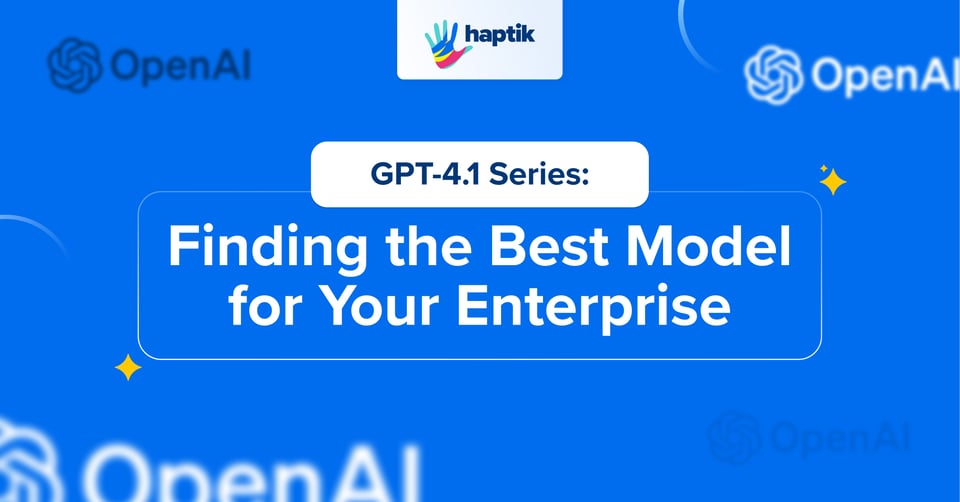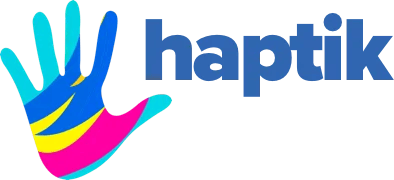GPT 4.1 vs GPT 4.1 mini vs GPT 4.1 nano: How OpenAI's Newest Models Compare for Enterprise Use Cases?

OpenAI has unveiled its most advanced series of models, GPT-4.1, marking a significant breakthrough in AI development. Over the past year, GPT-4o and GPT-4o-mini have seen widespread adoption, powering everything from customer service to enterprise automation at scale.
The introduction of GPT-4.1 and its Mini and Nano variants are set to redefine the enterprise AI landscape, building on the robust, efficient outcomes that made 4o and 4o-mini highly suitable for real-world deployments. For organizations already integrating with OpenAI’s technology, the new models offer a massive upgrade - enabling more complex workflows and more scalable AI agents.
Get Started with AI Agents for Your Enterprise Today!
Key Improvements Across GPT-4.1 Models
- 1 million token context window (vs. 128k in GPT-4o), capable of taking in approximately 750k words.
- 21–27% better coding performance than previous models, ideal for software development.
- All the models are API-exclusive (not integrated into ChatGPT) and surpass GPT-4o’s capabilities in nearly every aspect.
A Comparison of GPT 4.1 vs GPT 4.1 mini vs GPT 4.1 nano
|
GPT-4.1 |
GPT-4.1 mini |
GPT-4.1 nano |
|
|
Context window |
1 million tokens |
1 million tokens |
1 million tokens |
|
Cognitive tasks |
Excels in complex reasoning and multi-step logic |
Efficiently handles moderately complex reasoning tasks |
Suited for tasks like classification, information extraction, etc. |
|
Cost efficiency |
Up to 83% cheaper than GPT-4o |
40% cheaper than GPT-4.1 |
Most affordable option |
|
Coding performance |
54.6% (SWE-bench) |
48% |
N/A |
|
Latency |
Moderate |
Low |
Ultra-low |
|
Modalities |
Text, image in, text out |
Text, image in, text out |
Text, image in, text out |
Let’s dive deeper into each of the GPT-4.1 models.
GPT-4.1
This is the most capable model in the 4.1 series, offering significant improvements over GPT-4o in coding, instruction following, and long context comprehension.
ALSO READ: Introducing Haptik’s AI Agents - A New Era of Customer Experiences
It's best for complex coding tasks, handling complex instructions, and processing large volumes of text or code - making it ideal for advanced development, code generation, and in-depth analysis within enterprise environments.
GPT-4.1, while expensive, stands out as the smarter choice for enterprises to automate sales flows with its better recommendation quality and a nuanced grasp of consumer intent understanding, enabling more personalized and contextually-relevant interactions. For businesses, this translates to reduced customer drop-off and higher conversion rates.
GPT-4.1 mini
The mid-tier option balances strong general-purpose reasoning with lower cost and latency. It outperforms GPT-4o on some intelligence benchmarks, including instruction following and image understanding, while being significantly faster and cheaper.
RELATED: OpenAI's “o1” Is a Step Towards Advanced AI Reasoning
For enterprises, this enables quick turnaround times to build applications such as interactive tools, chatbots, and real-time text and image analytics, without sacrificing significant reasoning capabilities.
What’s more, GPT-4.1 mini is a workhorse model that can be used for agentic flows pertaining to support, booking, and more. It is also the preferred choice for multi-modal agents as it offers comparative vision performance to 4.1 at a fraction of its cost.
GPT-4.1 nano
The first-ever nano model launched by OpenAI, it is the fastest and most cost-effective model in the new lineup. While it’s less powerful in raw reasoning compared to the other two, it still boasts a 1 million token context window.
READ: AI Moves Closer to Human-Level Intelligence with Upgraded Claude 3.5 Sonnet
Its ultra-low latency makes it ideal for lightweight, high-frequency tasks at scale within enterprises, such as autocomplete features, text classification, and rapid information extraction from large documents where speed is paramount and complex reasoning is less critical.
The nano variant also excels with straightforward, linear tasks such as lead-generation form-filling.
Final Thoughts
OpenAI’s GPT-4.1 family ushers in a new era for enterprises to lead the next wave of intelligent transformation. Those who seize this moment—experimenting boldly, integrating deeply, and iterating quickly—will define what’s possible in the age of AI-powered business.
The expanded context window allows enterprises to deploy AI agents that not only understand but also reason across sprawling codebases, heavy contracts, or years of internal documentation.
This flexibility allows organizations to optimize for speed, cost, or capability as needed—whether they are automating high-volume classification tasks or powering sophisticated, multi-step AI agents. The result is a more democratized, accessible AI landscape where businesses of all sizes can find a model that fits their unique requirements.




